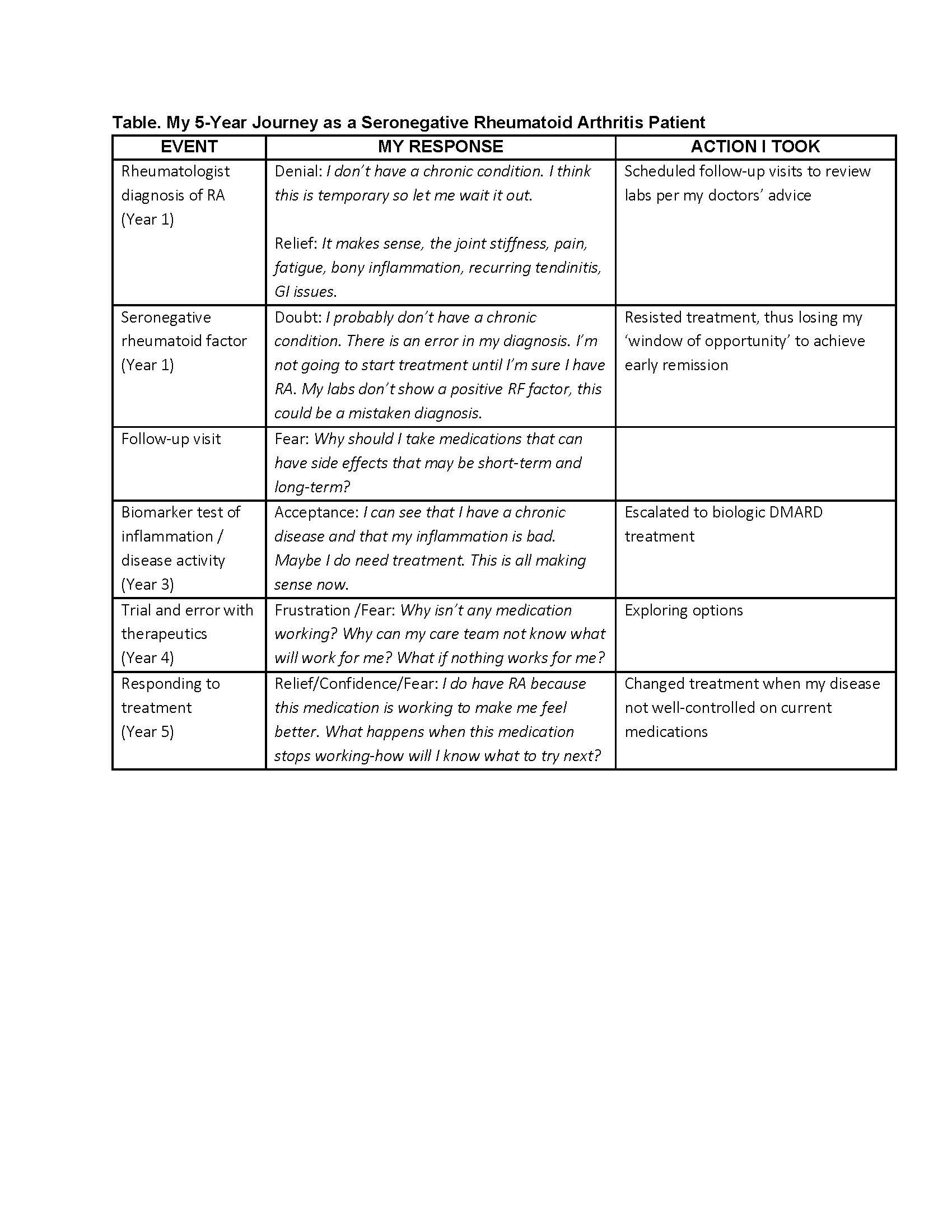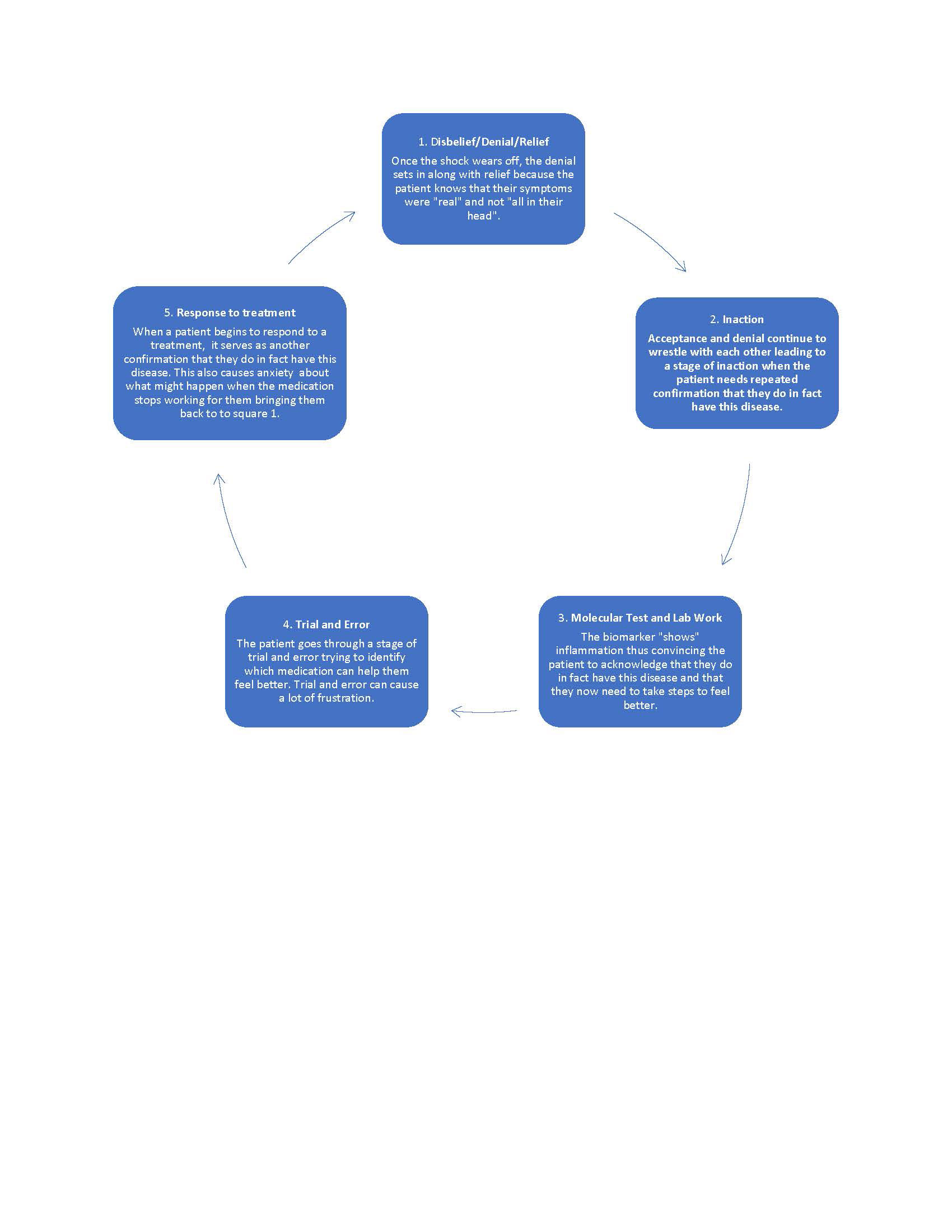Session Information
Date: Saturday, November 12, 2022
Title: Patient Perspectives Poster
Session Type: Poster Session A
Session Time: 1:00PM-3:00PM
Background/Purpose: When I first received my Rheumatoid Arthritis (RA) diagnosis 5 years ago, I experienced a combination of relief and disbelief. Relief because now all my symptoms made sense. Denial and disbelief because my blood work did not show autoantibodies and my Rheumatoid Factor (RF) was initially negative. I was diagnosed with seronegative RA and was recommended to immediately start treatment with disease modifying anti-rheumatic drugs (DMARDs)and glucocorticoids to curb inflammation.
Intervention: My RA journey with medications has been one of trial and error, much like it tends to be for many of us. I felt frustrated and scared as I cycled through the conventional DMARDs, then a couple of the Janus kinase (JAK) inhibitors and then a few of the anti-tumor necrosis factor (anti-TNF) agents. Every time a flare (re)surfaces, I am once again transported to the beginning of my RA journey, where I am faced with a reckoning about whether or not I will ever feel better, whether I need to switch a medication, and why it has stopped working for me, whether another medication will work and if so, then for how long, and how to cope with anxiety around potentially failing this medication, too? It is like feeling the uncertainty of diagnosis all over again. That is why it helped when I was able to get a test of my disease activity using biomarkers. I finally believed I had RA when I saw my test score. It gave me a sense of how bad my inflammation was and how bad it was likely to get. Seeing my score was not low helped me make treatment decisions and get aggressive with my treatment. However, in the end, I was still unable to ascertain which medication would be more likely to work for me to help me feel better with less pain, stiffness, and fatigue.
Maintenance: Having a visual representation of inflammation was particularly important to me for my RA where almost everything remains invisible. When I was able to put a score to my inflammation, it helped me to stay on and modify treatment because I wanted to see my disease activity score go down. For someone with seronegative RA like me, the visibility of “seeing” my RA was what got me to stay on treatment.
Quality of Life: Believing that I have RA was half the battle won for me. It meant I could move forward from denial to doing things about my disease including initiating and staying on treatment and adding non-pharmacological approaches to manage my RA. Molecular tests and blood tests do more than just help the physician to understand the pathophysiology of a disease. It helps those of us living with a disease to “see” and “believe” it, which in turn prompts us to make treatment decisions that ultimately help us feel better.
To cite this abstract in AMA style:
Venkatachalam S. What Lies Beneath: Making Rheumatoid Arthritis Visible for the Seronegative Patient Through Blood Work [abstract]. Arthritis Rheumatol. 2022; 74 (suppl 9). https://acrabstracts.org/abstract/what-lies-beneath-making-rheumatoid-arthritis-visible-for-the-seronegative-patient-through-blood-work/. Accessed .« Back to ACR Convergence 2022
ACR Meeting Abstracts - https://acrabstracts.org/abstract/what-lies-beneath-making-rheumatoid-arthritis-visible-for-the-seronegative-patient-through-blood-work/


